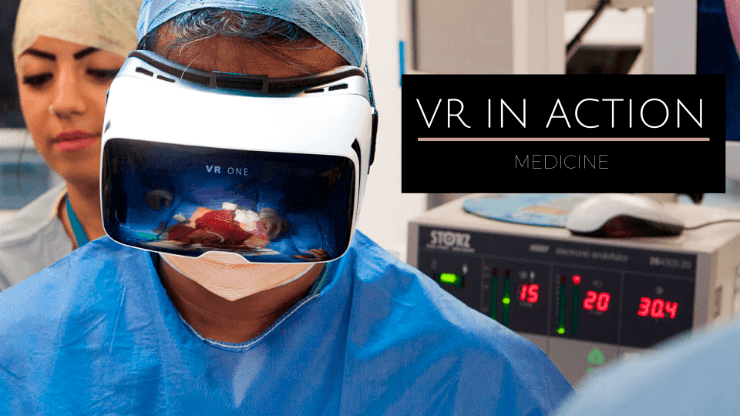Nearly every industry has been began to accept virtual reality in some capacity as a way to improve the way that they conduct business. However, in no field is the promise of the VR revolution more evident than the medical field. Medical research is always on the cutting edge of technology, and the coming VR boom is no exception. Doctors are looking for ways to solve old problems using this new technologies and researchers are finding ways to simulate surgeries, help people deal with phobias and PTSD, and even help patients manage pain without the use of drugs.
Training
Typically, a surgeons training involves practicing surgeries on cadavers before beginning to shadow other surgeons and working their way up to assisting on surgeries. This process is extremely long and is not very cost effective. By incorporating VR simulations, doctors are able to learn how to perform these procedures in an environment that allows for no risk to patients. Doctors are able to perform these simulations over and over in order to develop their expertise. With this technology, doctors can perform operations dozens of times before moving onto cadavers. Which means by the time that they are operating on a patient, they are extremely familiar with the procedure. This process is already in practice at many teaching hospitals and it will very likely become the norm over the next few years.
Psychology
One of the most interesting breakthroughs of VR in medicine is its use in the treatment of psychological conditions. Researchers have found a lot of success in treating people suffering from phobias by placing them in situations that are controllable and safe that allow them to confront their fears. For example, someone who is arachnophobic can be placed in a virtual environment where they can be in contact with spiders in a way that can give them the mechanisms to overcome their fears without the risk of the situation going out of control. In a similar fashion, programs have been designed that help people suffering from claustrophobia and PTSD. By placing patients into these situations, they can experience things that trigger their fears, but have the benefit of being able to escape the situation by simply removing their headset. This allows them to gain beneficial treatment, without being overwhelmed and becoming risk to themselves or others.
Pain Management
Another area that has the potential to truly become groundbreaking as it gains traction is the use of virtual reality for pain management. Researchers at the University of Washington have found that the use of virtual reality effective in helping burn victims cope with pain during excruciating procedures like wound cleaning and redressing. By immersing patients in virtual environments that are designed to relax them and heavily stimulate their senses, they are able to distract burn victims from their pain in a significant way. One company that is leading the way in this area is Deepstream VR. On the cutting edge of VR in pain management, they are working with schools like Harvard and Columbia to bring virtual reality pain relief to fruition. Multiple studies have found VR to be an effective treatment to reduce pain, anxiety, unpleasantness, time spent thinking about pain, and the perceived time spent undergoing medical procedures. Through the use of treatment plans like this, doctors are able to reduce the amount of opioids that they prescribe, which can be extremely addictive, especially to children.
As researchers continue to develop new uses for virtual reality technology, it will be exciting to see the benefits that this technology brings to the medical community in the coming years.
